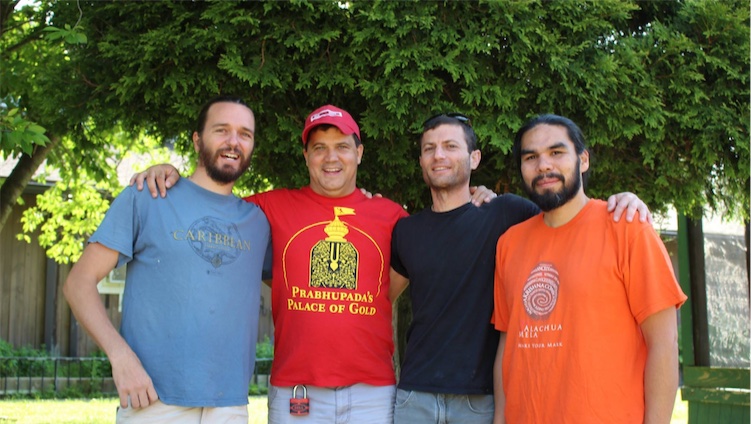Let’s Talk About ISKCON’s Generations – Which One Are You?
By Madhava Smullen | Дек 14, 2018

In ISKCON today, we typically call everyone who joined the movement “the first generation.” We call all the children of those who joined “second generation,” no matter their age, and all их children “third generation.”
But now the gurukuli pioneers who first coined the phrase “second generation” have come forward to say that continuing to use the term to describe everyone across a thirty-year timespan is confusing and problematic.
In the late 1980s, those who had attended ISKCON’s early gurukulas first began calling themselves gurukula veterans, then gurukula alumni, before settling on “gurukuli.”
In the early 1990s, ISKCON Youth Minister Manorama Das and longtime community organizer Chaitanya Mangala Das also looked for a generational descriptor.
“Our parents, Srila Prabhupada’s disciples, were the first joiners of ISKCON, so they were the first generation,” Chaitanya Mangala says. “Logically, it made sense then that we were the second generation. So we began calling ourselves that. The subtitle of our magazine, ‘As It Is: The Voice of the Second Generation,’ was the first public use of that terminology.”
Over the years, the term stuck. Later groups born into ISKCON who hadn’t necessarily gone through the full gurukula experience were at different times called “Vaishnava Youth” or “Kulis,” but didn’t attach a generational descriptor to themselves. So the phrase “second generation” acquired a life of its own.
Today, the label is applied to both kulis in their teens and twenties, and original gurukulis in their mid-fifties – which causes not only confusion but also societal challenges.

The whole range of ISKCON generations at the New Vrindaban Kulimela in 2016
“The oldest of us are fifty-five now and just became eligible for AARP this year,” Chaitanya Mangala says. “Yet because we’re all ‘the second generation,’ those of us in midlife, heading towards old age are still being referred to as ‘the youth’ of our movement. Someone who is fifty-something years old, has two or three kids, degrees, and has been working on a professional career for twenty years is put in the same category that equates them with someone in their early twenties just starting out their adult life. You can imagine the social problems that can evolve from that mental connection.”
To add further confusion, both the twenty-something grown-up children of these older gurukulis, and today’s newborns are being lumped into the same “third generation” category.
What’s more, amongst those who joined ISKCON the term “second generation” is sometimes used to describe the initiated disciples of Srila Prabhupada’s disciples, causing more confusion between both types of “second gen.”
To help bring more clarity to ISKCON’s different generations, Chaitanya Mangala is now suggesting applying the mainstream Western generational terms, which overlay well onto ISKCON’s history.
“That way we can understand what they mean, because the mainstream society is using them; and mainstream society can understand what we’re saying, because we’re all more or less talking about the same timeframes,” Chaitanya Mangala says.
The terms are:
1st Gen. Those born between approx 1946 and 1964 (current ages 54 to 72). Other names include the Baby Boom generation and ISKCON’s pioneer generation.
2nd Gen. Those born between approx 1965 and 1980 (current ages 38 to 53). Also known as the gurukulis and Gen X.
3rd Gen. Those born between approx 1981 and 1995 (current ages 23 to 37). All in this generation are adults. Also known as Millenials, Kulis and Vaishnava Youth.
4th Gen. Those born between 1996 and 2010 (current ages 8 to 22). These are today’s “youth.” Also known as Gen Z.
5th Gen. Those born between 2011 and the present (current ages newborn to 7). When we talk about “kids,” these are today’s children. Also known as Gen Alpha.
“Let’s acknowledge and appreciate each of these generations!” Chaitanya Mangala says.
He hastens to point out that the terms are only suggestions for devotees to consider, and to adopt if they find them useful and meaningful.
“Obviously labels are limited and imperfect by their very nature, and aren’t applicable in every scenario,” he says. “We’re not trying to make this hard and fast or say you can’t be part of something because you don’t fit this tight-knit definition. But at least by having some clarifying markers, we can better identify different interest groups and age groups, and understand more clearly where people are in their lives and where they fit into timelines.”















